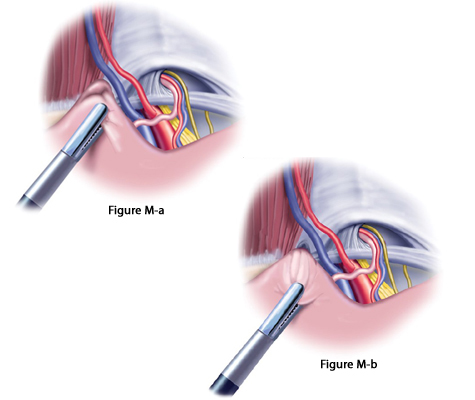Robotic surgery has become a popular technique for a variety of surgical procedures. The benefits of using a robot for a surgical procedure can be increased visualization and precision of delicate structures including nerves and cancers. However, those benefits must outweigh the increased length of surgery required to use the robot as well as other factors. Not every hernia benefits from a robotic hernia surgery approach.
Should You Have Robotic or Laparoscopic Hernia Surgery?
As we mentioned above, the benefits of robotic surgery can be improved visualization and improved precision with delicate structures like nerves and cancers. Robotic surgery has become the preferred method for prostate removal owing in part to the precision required to preserve the nerves in the area and decrease the incidence of erectile dysfunction. Another application for robotic surgery is in patients with cancer, where the visualization and precision allows cancer surgeons to dissect small lymph nodes from surrounding tissues with extra care.
The downsides to the use of the robot is clearly the extra time required for the surgery. In addition, for hernia surgeries using the robot requires the surgeon to operate inside the abdomen and around the intestines. When compared with laparoscopic hernia repair, using the robot adds time which is needed to bring the robot over the patient and position the robotic arms. Also, laparoscopic surgery can be done outside of the intestine area in the ‘preperitoneal’ space, which avoids future scar tissue and adhesions in the abdominal cavity. Although this can sound trivial, it can add up to significant downsides to robotic hernia repair.
For patients with inguinal hernias, the proposed benefits of robotic surgery are simply not as applicable. Regular laparoscopic surgery allows for outstanding visualization of the nerves, arteries, veins, and the hernia during a hernia surgery. There is no cancer or other aggressive diseases which require the benefits of robotic hernia repair.
The busiest hernia surgeons in Southern California don’t use robotic hernia repair due to the same outcomes as laparoscopic surgery but with increased surgical time and lack of benefits of robotic surgery. There are plenty of surgeons who do not have the skills to perform laparoscopic hernia repairs and they need the extra visualization and control that the robot can impart. However, the use of a machine to improve a surgeons skills for less complex surgery like a hernia repair seems to be a misguided benefit. The best thing that patients can do is to ensure that their surgeon performs a high volume of hernia repairs and has a dedicated practice for hernia patients.
Laparoscopic vs Robotic Inguinal Hernia Repair
Dr. Harris narrates an actual laparoscopic inguinal hernia repair done at our hernia center and compares it to a robotic surgery.Patients can visit our ‘Compare Laparoscopic & Robotic Hernia Surgery‘ page to review a detailed comparison of the two different techniques.
Robotic Hernia Surgery Repair – Inguinal
A robotic inguinal hernia requires a 2cm incision at the belly button, and two smaller punctures next to the umbilicus. The belly button incision allows the camera to view the inside of the abdomen and the two smaller punctures are for the operating instruments.

To begin the peritoneum, or the lining of the abdomen, is separated from the overlying muscle. Once this space is created, the hernia is then pulled back into the abdomen from it’s hole in the muscle. This hole can either be lateral to the blood vessels (indirect inguinal hernia, left below) or towards the middle from the blood vessels (direct inguinal hernia, right below). Regardless, the surgery is the same; once the hole is found, a mesh is placed under the muscle to reinforce the hernia defect.


Our Approach
Dr. Harris specializes in surgical repair for all hernia types. For patients who require a laparoscopic surgery, Dr. Harris commonly performs these procedures. When performing a tension free mesh hernia repair, Dr. Harris uses the latest and most advanced lightweight mesh available which significantly reduces pain and discomfort after the surgery. Many surgeons still use mesh which was invented 10 years ago which can increase the chances of post operative mesh pain.
Today’s advanced mesh reduces those risks to almost zero. Although open surgical hernia repair is still an important option for many patients, every patient should consider being seen by a surgeon who can perform advanced laparoscopic hernia surgery and who uses the newest lightweight mesh. Only a small handful of the hundreds of general surgeons in Orange County, Los Angeles, Riverside and San Diego have the experience to perform hernia surgeries using laparoscopic techniques and use cutting edge lightweight mesh.














